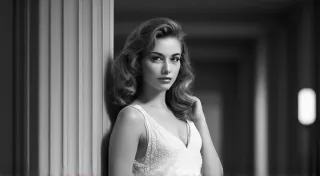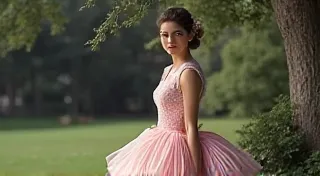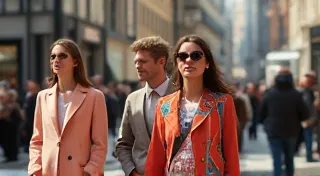The Rise and Fall of the New Look: Christian Dior's Revolution
The post-war era was a time of immense change, and nowhere was this more evident than in the world of fashion. After years of austerity and wartime restrictions, women longed for a return to glamour and femininity. Enter Christian Dior, whose 1947 collection, dubbed “The New Look,” irrevocably altered the course of 20th-century style and continues to influence vintage fashion today.
The Context: Fashion in the Aftermath of War
During World War II, fabric rationing and a focus on practicality dictated fashion. Clothes were utilitarian, often made from durable materials like wool and featuring simpler designs. Hemlines were shortened, and silhouettes were streamlined – a far cry from the opulent styles of the 1930s. Women entered the workforce in unprecedented numbers, and clothing needed to be functional and easy to wear. The spirit of the time prioritized functionality over frivolousness.
By 1947, the desire for change was palpable. The war's hardships had taken their toll, and people yearned for a return to normalcy and beauty. The atmosphere was primed for a radical shift in fashion.
The Birth of a Revolution: Dior's Vision
Christian Dior, a relatively unknown designer at the time, presented his first collection at the Salon du Prêt-à-Porter in Paris. The collection was immediately and dramatically different. The "New Look" rejected the severe lines of wartime fashion. It featured full, calf-length skirts supported by structured petticoats, a cinched waist, and rounded shoulders. The emphasis was on the bust and a defined feminine shape. Fabrics were luxurious – wool, silk, and cotton – in abundance, a stark contrast to the scarcity of the preceding years. The collection also introduced a softer, more romantic color palette.
The name "The New Look" was coined by Carmel Snow, the editor of Harper's Bazaar, who famously declared that Dior had given women a "new look" after the hardships of the war. The term stuck, cementing Dior's place in fashion history.
Controversy and Triumph
The "New Look" wasn't universally welcomed. Some criticized it as wasteful, given the ongoing global challenges and the shortages of materials. However, the overwhelming response was one of excitement and admiration. Women embraced the return to femininity, and the collection’s success was undeniable. The lavish use of fabric was a deliberate choice by Dior, a statement of hope and luxury in a recovering world. The "New Look" revitalized the Parisian fashion industry and helped re-establish France as the center of the global fashion world.
The Lasting Legacy: A Vintage Fashion Icon
The impact of the "New Look" resonated far beyond 1947. It established a silhouette that dominated fashion throughout the 1950s and continues to inspire vintage fashion lovers today. The emphasis on a defined waist and full skirt became a benchmark for feminine elegance. While fashion trends have evolved, the core principles of the "New Look" – the celebration of curves and a return to sophisticated glamour – remain a cherished part of vintage style.
Evolution and Decline
While Dior’s initial collection was revolutionary, the style gradually evolved. Designers began to experiment with the silhouette, shortening hemlines and introducing more streamlined designs. By the late 1950s, the more youthful and playful styles of designers like Coco Chanel began to gain popularity, signaling a shift away from the strict formality of the New Look. However, the foundational principles remained influential.
Today, the "New Look" remains a powerful symbol of post-war optimism and a beloved element of vintage fashion, continually inspiring modern designers and captivating those who appreciate the enduring allure of classic style.





